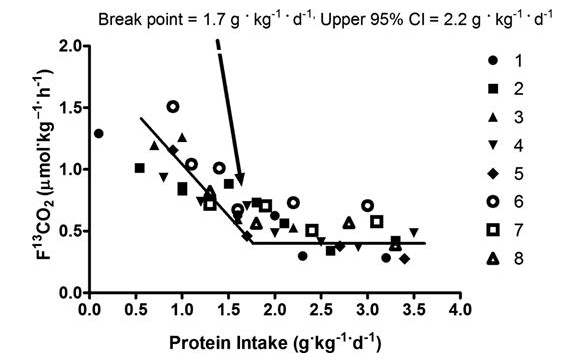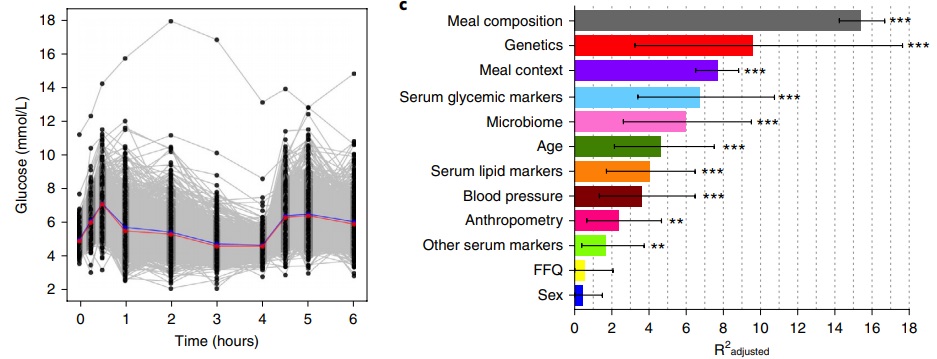
Are higher-protein diets bad for your bones?
A thread.
1/17
A thread.
1/17
A possibly negative aspect of higher protein intake is related to bone health and the possible increase in dietary acid load from it.
This is called the acid ash hypothesis.
2/17
This is called the acid ash hypothesis.
2/17
This holds that increased protein intake (and particularily sulfur-containing amino acids) leads to a higher dietary acid load, which is regulated by the release of alkalizing compounds derived from bone, resulting in bone resorption, osteoporosis and hypercalcuria.
3/17
3/17
However, in this study, bone mineral density was not correlated with the ratio of animal to plant protein intake, despite the fact that animal protein provides acid precursors, while vegetables provide base precursors not found in animal foods.
doi.org/10.1093/ajcn/7…
4/17
doi.org/10.1093/ajcn/7…
4/17
Worse still, the so-called acid ash hypothesis has been examined in meta-analyses and found to lack support.
5/17
5/17
This meta-analysis found that, in contrast to the acid ash hypothesis, higher phosphate intake was associated with decreased urinary calcium and increased calcium retention.
doi.org/10.1186/1475-2…
6/17
doi.org/10.1186/1475-2…
6/17
In this analysis, which used the Bradford/Hill criteria to test causality, it was clear that the association between dietary acid load and osteoporotic bone disease was not supported by evidence...
doi.org/10.1186/1475-2…
7/17
doi.org/10.1186/1475-2…
7/17
...while in a recent analysis conducted by the US National Osteoporosis Foundation, the authors concluded that there are positive rather than negative trends in bone density in most areas of the bone when on a high-protein diet.
doi.org/10.3945/ajcn.1…
8/17
doi.org/10.3945/ajcn.1…
8/17
Consistent with this conclusion, it has been suggested that dietary protein supports bone health, but this is probably only the case when calcium intake is adequate.
ncbi.nlm.nih.gov/pmc/articles/p…
9/17
ncbi.nlm.nih.gov/pmc/articles/p…
9/17
In a 6-month intervention exercise-trained women, the authors found that a high-protein diet (2.8g/kg per day) had no effect on whole body bone mineral density, lumbar bone mineral density, or T-scores vs the control group.
doi.org/10.1186/s12970…
10/17
doi.org/10.1186/s12970…
10/17
In a 16-week diet and exercise weight loss program, consuming dairy foods and higher protein, combined with adequate calcium and vitamin D intake, resulted in improved bone health and metabolic health indicators in overweight and obese young women.
doi.org/10.1210/jc.201…
11/17
doi.org/10.1210/jc.201…
11/17
After all, the correlation between changes in calcium excretion and changes in urinary acid excretion is not is not evidence that the source of the excreted calcium is bone or that this calciuria contributes to the development of osteoporosis.
12/17
12/17
In fact, data from a dual stable calcium isotope study suggest that the main source of increased urinary calcium from a high-protein diet comes from increased dietary calcium absorption rather than bone resorption.
doi.org/10.1210/jc.200…
14/17
doi.org/10.1210/jc.200…
14/17
Therefore, in general, it seems that protein not only does not harm bones, but it is an essential nutrient for bone health.
doi.org/10.1080/073157…
15/17
doi.org/10.1080/073157…
15/17
Its intake seems to have a positive effect on calcium balance and therefore the maintenance of bone mineral density.
doi.org/10.1038/oby.20…
16/17
doi.org/10.1038/oby.20…
16/17
In conclusion, not only is there lack of evidence linking higher dietary protein intake to poor bone health, it may be wise to suggest older men and women (the part of the population most susceptible to osteoporosis) consume a high protein diet to optimize bone mass.
17/17
17/17
• • •
Missing some Tweet in this thread? You can try to
force a refresh








